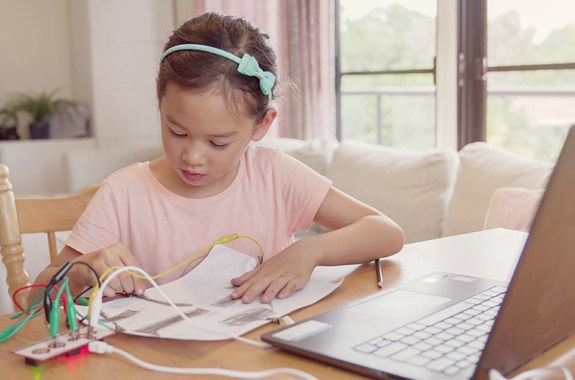Grade Level
All
minutes
Various
subject
Index
Activity Type:
Is your school building closed? Are you now working to engage your students in STEM while remote?
We know that this transition to remote learning in such a short timeframe is tough, and we want to make sure that you have access to inquiries and engineering & design challenges that you can easily assign to learners at home.
Enter the Science Friday Remote Learning Kit!
Science Friday Educate resources are always free and openly available, but we’ve also created a set of GoogleDoc assignments that can be easily assigned via Google Classroom, shared with students in your remote online learning platforms, or emailed to students directly. Simply add Science Friday’s Remote Learning Kit to your Google Drive, make a copy of any assignment you want to use, and assign away!
In the kit you will find:
- — A message from us which includes some tips on adapting to remote learning,
- — A guide to the assignments (including general topics)
- — The folder of assignable Google Docs, and
- — A blank template so you can use this format to create your own assignments.
So choose your own adventure! Dive directly into the folder, go through the indexed assignments below (using either the slide show or the descriptions), or check out the Remote Learning Kit Guide included below.
Assignment Index
The Bouba-Kiki Effect – The Bouba-Kiki effect describes the tendency of people to identify certain sounds with specific types of shape. Students will test out the Bouba-Kiki Effect, learn about current research, create their own sound-shape pairings based on the theories behind the Bouba-Kiki effect, and evaluate different explanations for the effect based on their observations.
Design A Vortex Cannon – Can you throw air? Students explore the concept that air is matter by build an air vortex cannon that shoots air across the room. They then modify and test different prototypes to make an air cannon that shoots even farther. They also look at the sphagnum moss, an organism which create vortices when they disperse their spores.
Embark On A 360 Degree Geologic Exploration – Learn how to decipher some of the physical processes that shaped the land structure, or “geomorphology,” of parts of California in this virtual field work. Students can visit different spots in the photosphere to collect evidence of glaciers and types of rock at the Columns of the Giants in California.
Snotty Plots: How Do You Graph A Sneeze?– If you’re curious about how far sneezes travel, you aren’t alone. Because sneezing can spread infectious diseases like the flu and the common cold, many scientists and doctors are interested in better understanding how far a sneeze can travel. Students engage in mathematical models to determine how far sneeze droplets travel.
Build An Ultra High-Speed Toy Out Of Paper – What can spin 100,000 times in a minute and generate forces over 30,000 times the force of gravity? Surprise! It’s a toy that’s thousands of years old, called a whirligig or buzz toy. Explore how one lab used this concept to create a centrifuge made out of paper. Students examine how inertia is at play in this design challenge that tests their need for speed.
Meet the Writer
About Xochitl Garcia
@msxgarciaXochitl Garcia was Science Friday’s K-12 education program manager. She is a former teacher who spends her time cooking, playing board games, and designing science investigations from odds and ends she’s stockpiled in the office (and in various drawers at home).
